Forever Roses: How to Press Roses to Perfectly Preserve Them
Roses, with their timeless allure and delicate petals, have captivated hearts for generations. Their beauty is fleeting, but what if we told you that you can preserve their charm indefinitely? Welcome to the enchanting world of pressed roses, a timeless art form that allows you to capture the essence of these blooms and create beautiful keepsakes. In this guide, we’ll take you through the art of pressing roses, from understanding the materials you’ll need to select the perfect blooms and mastering the technique. Let’s embark on a journey of creativity, nostalgia, and everlasting beauty. Time to learn how to press […]

Roses, with their timeless allure and delicate petals, have captivated hearts for generations. Their beauty is fleeting, but what if we told you that you can preserve their charm indefinitely? Welcome to the enchanting world of pressed roses, a timeless art form that allows you to capture the essence of these blooms and create beautiful keepsakes. In this guide, we’ll take you through the art of pressing roses, from understanding the materials you’ll need to select the perfect blooms and mastering the technique. Let’s embark on a journey of creativity, nostalgia, and everlasting beauty.
Time to learn how to press roses like a professional

What are Pressed Roses?
Pressed roses are a form of preserved flowers created through the art of pressing. This process involves carefully flattening fresh roses and removing their moisture content to capture their delicate beauty. Pressed roses are not simply dried flowers; they are botanical art pieces that retain the original shape, color, and texture of the blooms. The process of pressing roses typically involves placing them between layers of absorbent paper, like blotting paper or parchment paper and subjecting them to pressure for an extended period. The weight of heavy books or a dedicated flower press is commonly used to apply consistent pressure to the roses. Over time, the roses lose their moisture and flatten, resulting in beautifully preserved specimens.
The process involves carefully flattening fresh roses and removing their moisture content
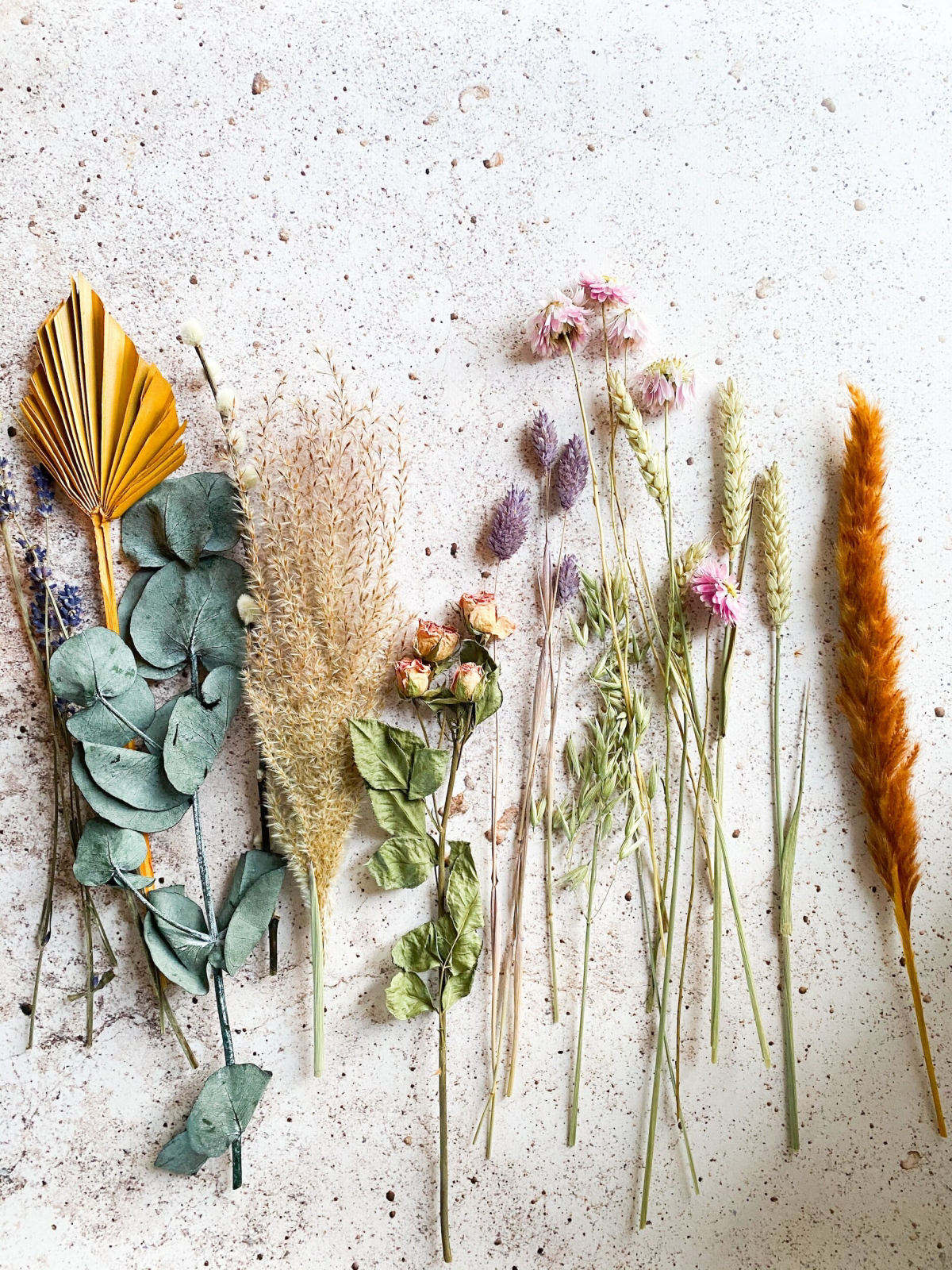
Pressed roses are revered for their timeless appeal and versatility. They can be used in various creative projects, from crafting and decorating to creating unique keepsakes and artwork. Pressed roses encapsulate the essence of romance, nostalgia, and nature, making them a cherished addition to any artistic endeavor. These preserved blooms are often used in crafting greeting cards, wall art, jewelry, and more, adding a touch of elegance and natural beauty to various creations.
They can be used in various creative projects like crafting and decorating
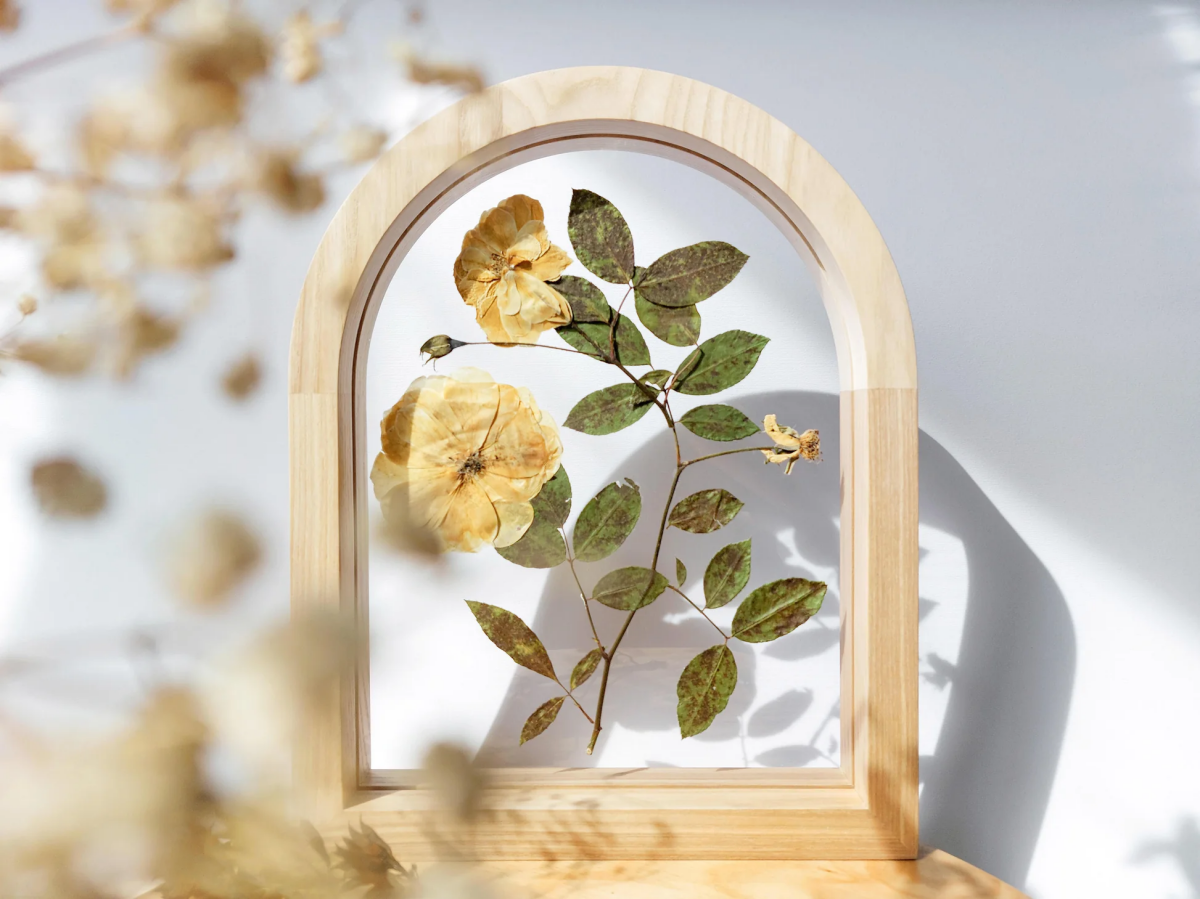
Understanding Pressed Roses
Pressed roses, often regarded as a form of botanical art, hold a unique place in the realm of preservation. They are not just dried flowers; they are delicate memories frozen in time. This art form has roots that stretch back centuries, with Victorian-era flower pressing being particularly renowned. Today, pressed roses find their place in various creative pursuits, from crafting to home decor. They encapsulate the essence of romance, nostalgia, and nature, making them a cherished addition to any artistic endeavor.
Pressed roses find their place in various creative pursuits, from crafting to home decor
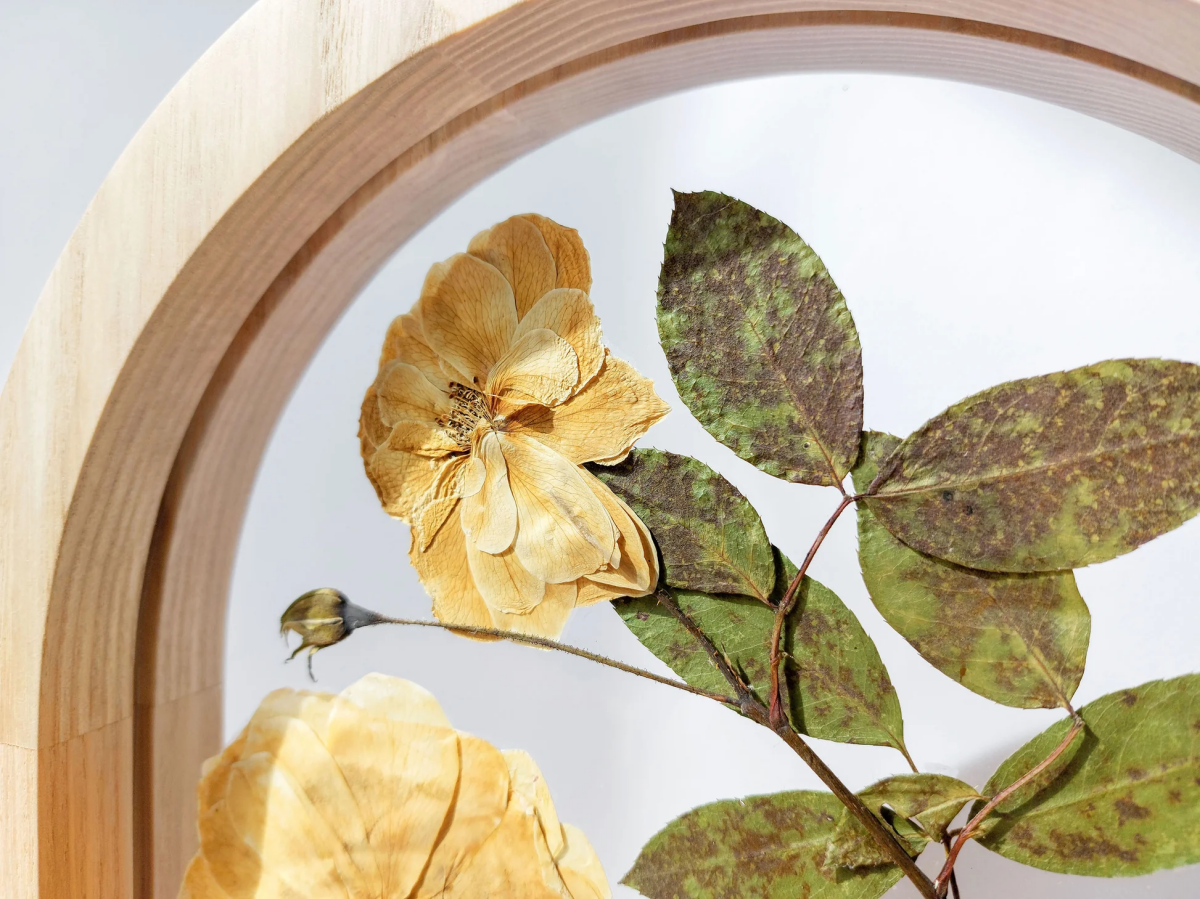
Materials and Tools
- Fresh Roses: The most crucial ingredient for pressed roses is, of course, the roses themselves. Opt for fresh blooms that are in full bloom and at their peak beauty. The choice of roses can significantly impact the final result, so select ones with vibrant colors and an appealing appearance.
- Absorbent Paper: You’ll need sheets of absorbent paper to place between the roses during the pressing process. Blotting paper or parchment paper are excellent choices for this purpose, as they help draw moisture away from the flowers while preserving their delicate petals.
- Heavy Books or Flower Press: To press the roses effectively, you’ll require heavy books or a flower press. The weight of these items is essential for flattening and drying the flowers evenly. Flower presses are specifically designed for this purpose and can be a valuable investment for serious flower pressing enthusiasts.
- Scissors or Pruning Shears: Trimming excess foliage, thorns, and stems from the roses is a crucial step in preparing them for pressing. Sharp scissors or pruning shears are essential tools for this task.
- Tweezers: Tweezers can be handy for the delicate handling of the roses, especially when placing them on absorbent paper or arranging them in the press. They allow for precision and prevent accidental damage to the fragile petals.
- Dry, Dark, and Well-Ventilated Space: Find a suitable location for the pressing process. It should be dry, dark, and well-ventilated to promote efficient drying of the roses while preventing the development of mold or mildew.
- Patience and a Love for the Craft: Perhaps the most vital components are patience and a genuine appreciation for the art of pressing flowers. The process takes time, and the best results come to those who approach it with care and dedication.
Gather all of your materials and tools before you start the project

Selecting the Right Roses
Not all roses are equally suited for pressing, and choosing the right ones can make a significant difference in the final outcome. When selecting roses for pressing, consider the following factors:
- Profile and Petal Thickness: Opt for roses with a relatively flat profile and thin petals. Thin petals are easier to press and dry evenly, resulting in a more attractive pressed flower.
- Vibrant Colors: Roses with vibrant and rich colors tend to retain their beauty even after pressing. While pastel shades can work well, intense hues often yield more striking pressed roses.
- Rose Varieties: Some rose varieties are better suited for pressing than others. Hybrid tea roses and floribunda roses are excellent choices due to their elegant appearance and thin petals.
- Bloom Stage: Harvest roses when they are in full bloom. At this stage, they display their peak beauty, and their moisture content is typically lower, aiding in the pressing process.
- Blemishes and Disease: Choose roses that are free from blemishes, damage, or signs of disease. Any imperfections on the fresh rose may become more pronounced during pressing, affecting the final result.
By carefully selecting your materials and roses, you set the stage for a successful and aesthetically pleasing pressed rose project. With the right tools and a discerning eye for choosing the perfect roses, you’ll be well-prepared to embark on your flower-pressing journey.
Choose roses that are free from blemishes, damage, or signs of disease
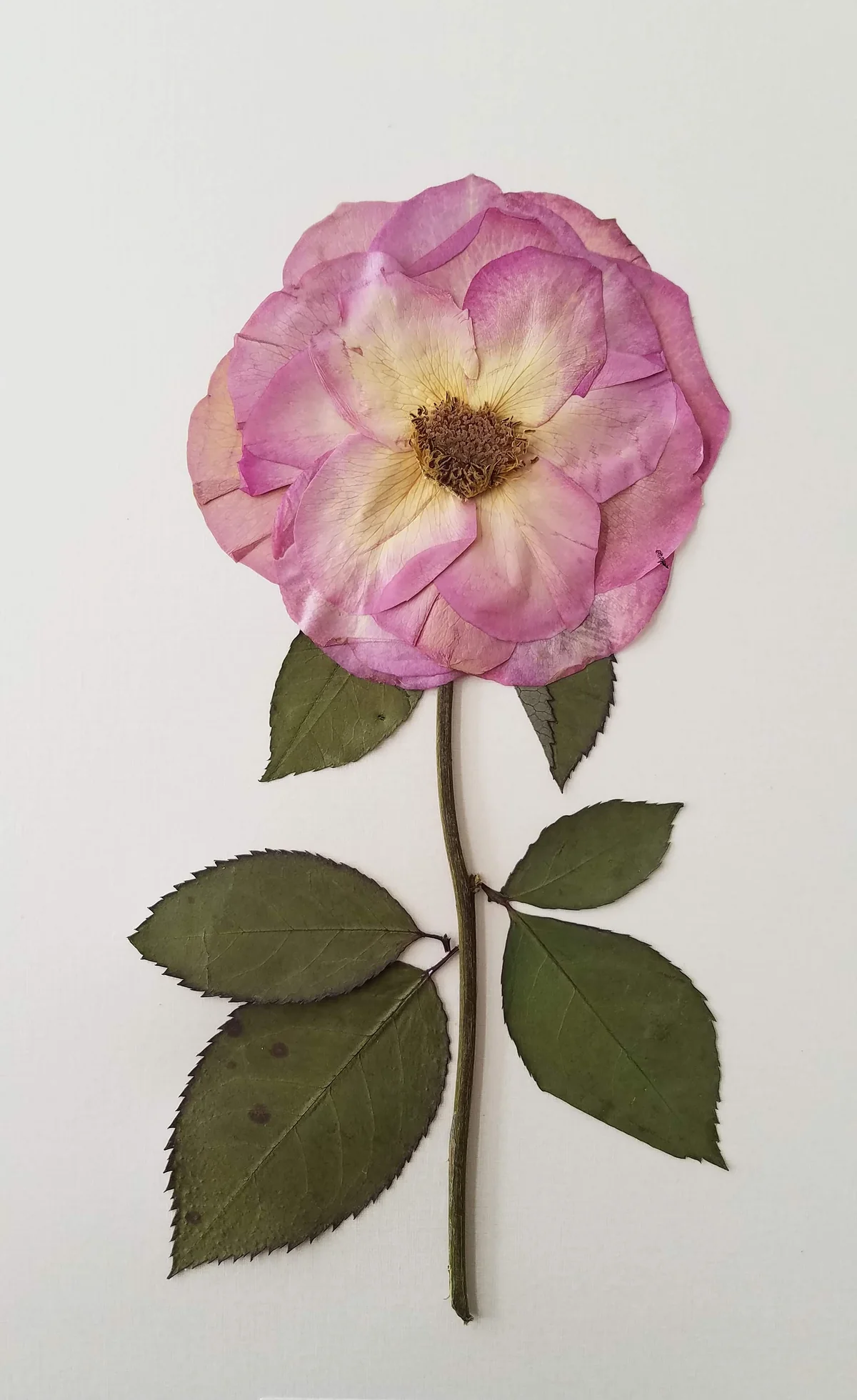
Step-by-Step Guide to Pressing Roses
Preparation
- Set up a clean and dry workspace with all your materials within reach.
- Trim the rose stems to about 1-2 inches in length.
- Prepare your absorbent paper by cutting it into squares or rectangles slightly larger than your rose.
Trim the rose stems to about 1-2 inches in length
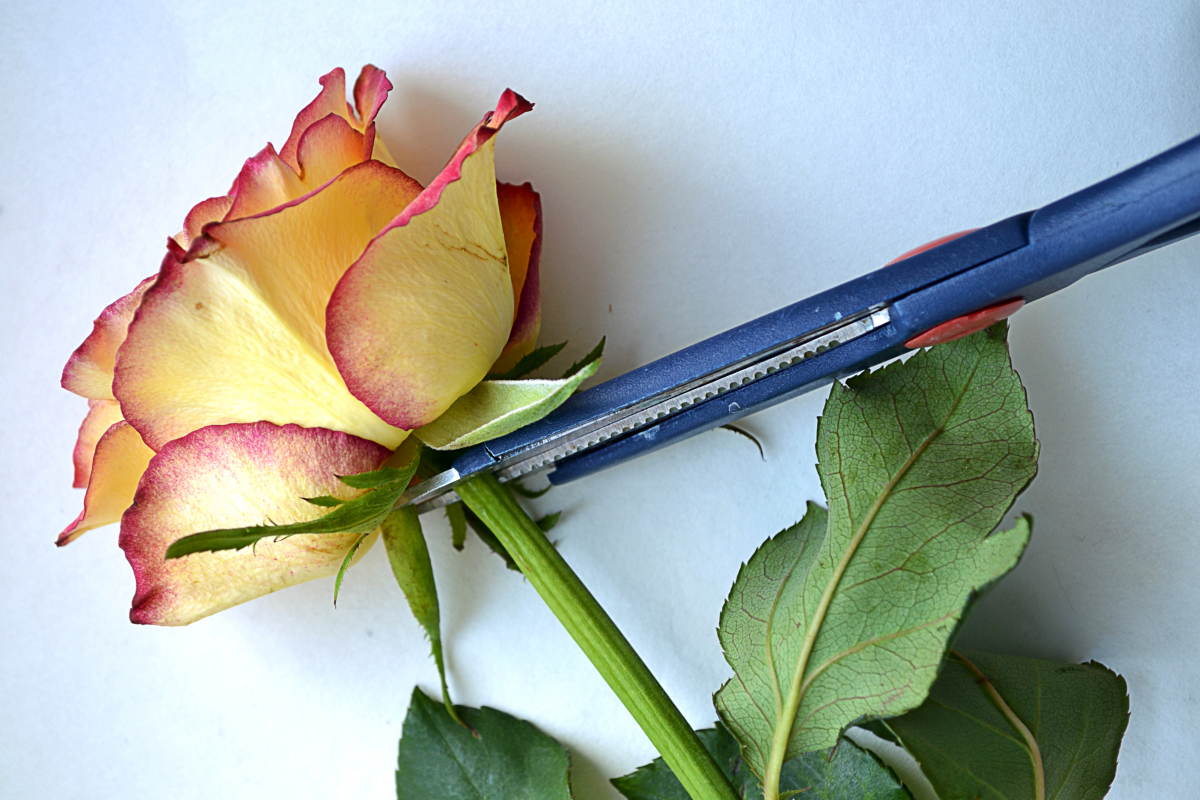
Pressing Method
- Place one piece of absorbent paper on the bottom of your heavy book or flower press.
- Lay the rose face down on the paper, ensuring it’s flat and not overlapping.
- Gently cover the rose with another piece of absorbent paper.
- Add more roses, layering them with absorbent paper in between.
- Close the book or press and secure it with heavy objects to apply even pressure.
Use a heavy object to firmly press the flowers
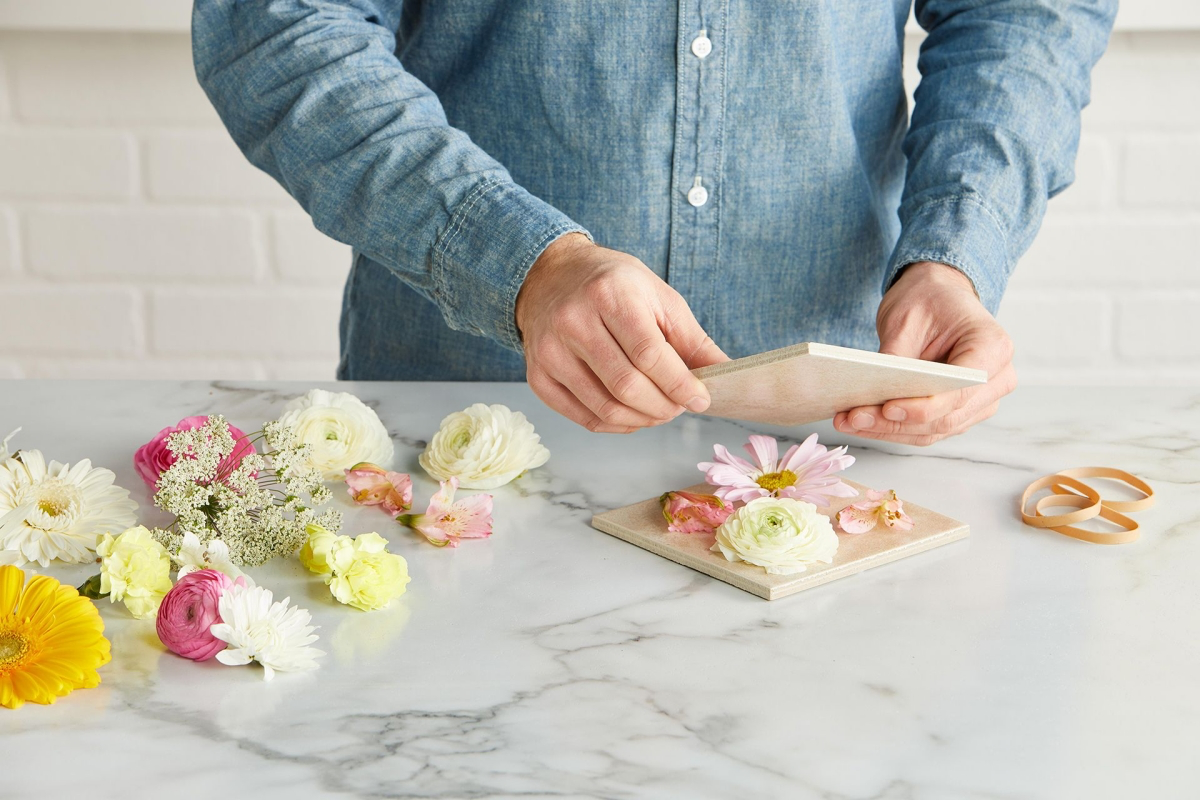
Drying and Preservation
- Store the book or press in a dry, dark, and well-ventilated area.
- Allow the roses to dry for 2-3 weeks, occasionally checking for progress.
- Once completely dry, carefully remove the pressed roses using tweezers.
- Place your pressed roses in an airtight container or frame them for display.
Allow the roses to dry for 2-3 weeks, occasionally checking for progress

Troubleshooting and Tips
Pressing roses can sometimes be a delicate process, and here are some additional tips and solutions for common issues you may encounter:
- Petals Sticking to Absorbent Paper: If you find that the delicate petals are sticking to the absorbent paper during the removal process, use a gentle approach. Take a damp cloth or sponge and lightly moisten the stuck petals. This should help release them from the paper without causing damage.
- Enhancing Color Vibrancy: To make your pressed roses even more visually appealing, consider lightly brushing them with a layer of white school glue diluted with water. This technique not only enhances the color but also adds a subtle glossy finish to your pressed flowers. Allow them to dry completely before handling.
- Experiment with Different Papers: Part of the charm of pressed roses lies in the textures and effects you can achieve. Don’t hesitate to experiment with various types of absorbent paper. Some papers may leave distinct imprints on the petals, creating unique patterns and textures that can make your pressed roses even more captivating.
If you find that the delicate petals are sticking to the absorbent paper, use a more gentle approach
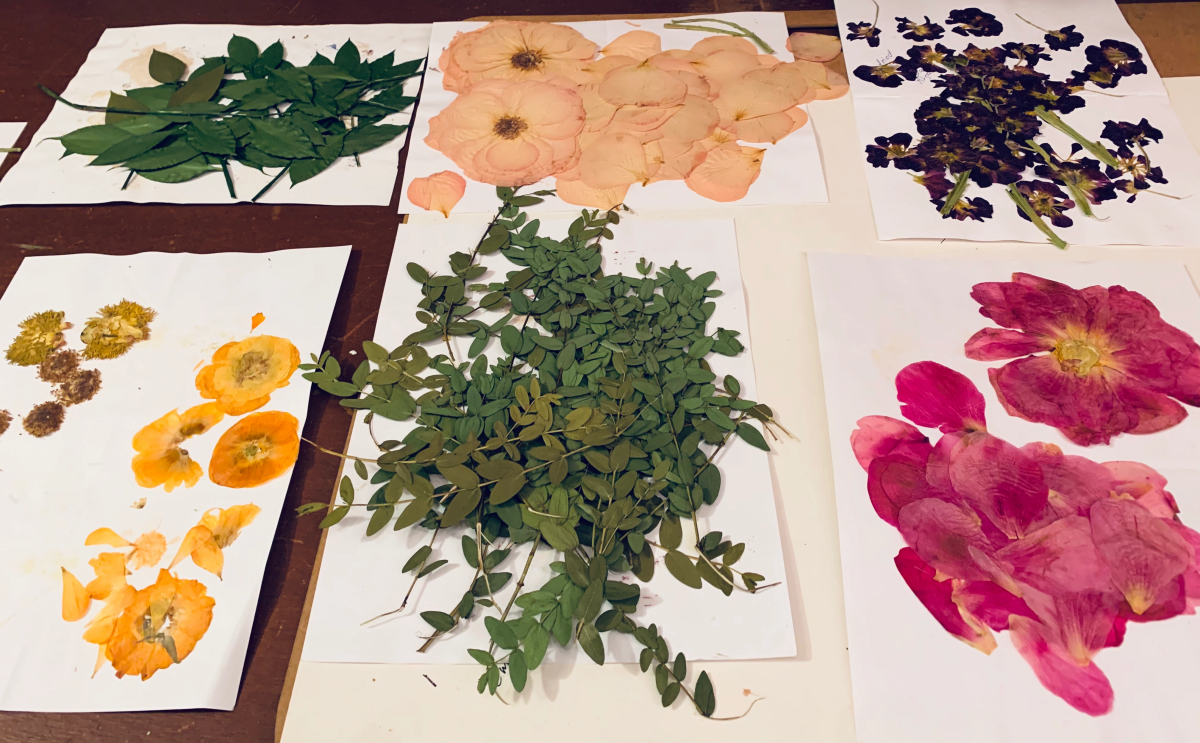
Do’s of Pressing Roses
- Select Fresh Roses: Choose roses that are in full bloom and at their peak freshness. Harvest them in the morning when their moisture content is lower for optimal results.
- Use Thin-Petaled Roses: Thin-petaled roses, such as hybrid tea roses and floribunda roses, are ideal for pressing. They flatten more easily and retain their shape and color during the pressing process.
- Trim Stems: Trim the rose stems to about 1-2 inches in length to make them more manageable for pressing.
- Prepare Absorbent Paper: Cut absorbent paper (blotting paper or parchment paper) into squares or rectangles slightly larger than your roses. This paper will help absorb moisture and protect the delicate petals.
- Layer Roses Carefully: When placing roses in the press, ensure they are flat and not overlapping. Use absorbent paper between each rose to prevent them from sticking together.
- Apply Even Pressure: Close the flower press or heavy book evenly to apply uniform pressure on the roses. This helps in flattening them evenly.
- Allow Ample Drying Time: Be patient and let the roses dry for 2-3 weeks in a dry, dark, and well-ventilated area. Check for dryness occasionally.
Thin-petaled roses, such as hybrid tea roses and floribunda roses, are ideal for pressing

Don’ts of Pressing Roses
- Avoid Thick-Petaled Roses: Roses with thick, fleshy petals, like some varieties of old garden roses, are not ideal for pressing, as they may not flatten well and can become discolored.
- Don’t Overlap Roses: Avoid overlapping roses when placing them in the press, as this can lead to uneven pressing and may damage the delicate petals.
- Skip Stem Removal: Do not skip trimming the rose stems, as long stems can make it challenging to press the roses flat and evenly.
- Don’t Rush Drying: Resist the temptation to rush the drying process. Roses need sufficient time to dry completely, and premature removal from the press can result in wilted or discolored petals.
- Avoid Excess Moisture: Do not expose pressed roses to excess moisture or humidity during the drying process, as this can cause mold or discoloration.
- Refrain from Pressing Imperfect Roses: Avoid pressing roses with blemishes, disease, or imperfections, as these flaws may become more pronounced during pressing and drying.
- Don’t Handle Wet Roses: Refrain from handling or attempting to remove pressed roses while they are still moist. Wet petals are delicate and can easily tear or lose their shape.
By following these do’s and don’ts of pressing roses, you can achieve beautifully preserved and vibrant pressed flowers that are perfect for various crafts and decorative purposes.
Do not expose pressed roses to excess moisture or humidity during the drying process
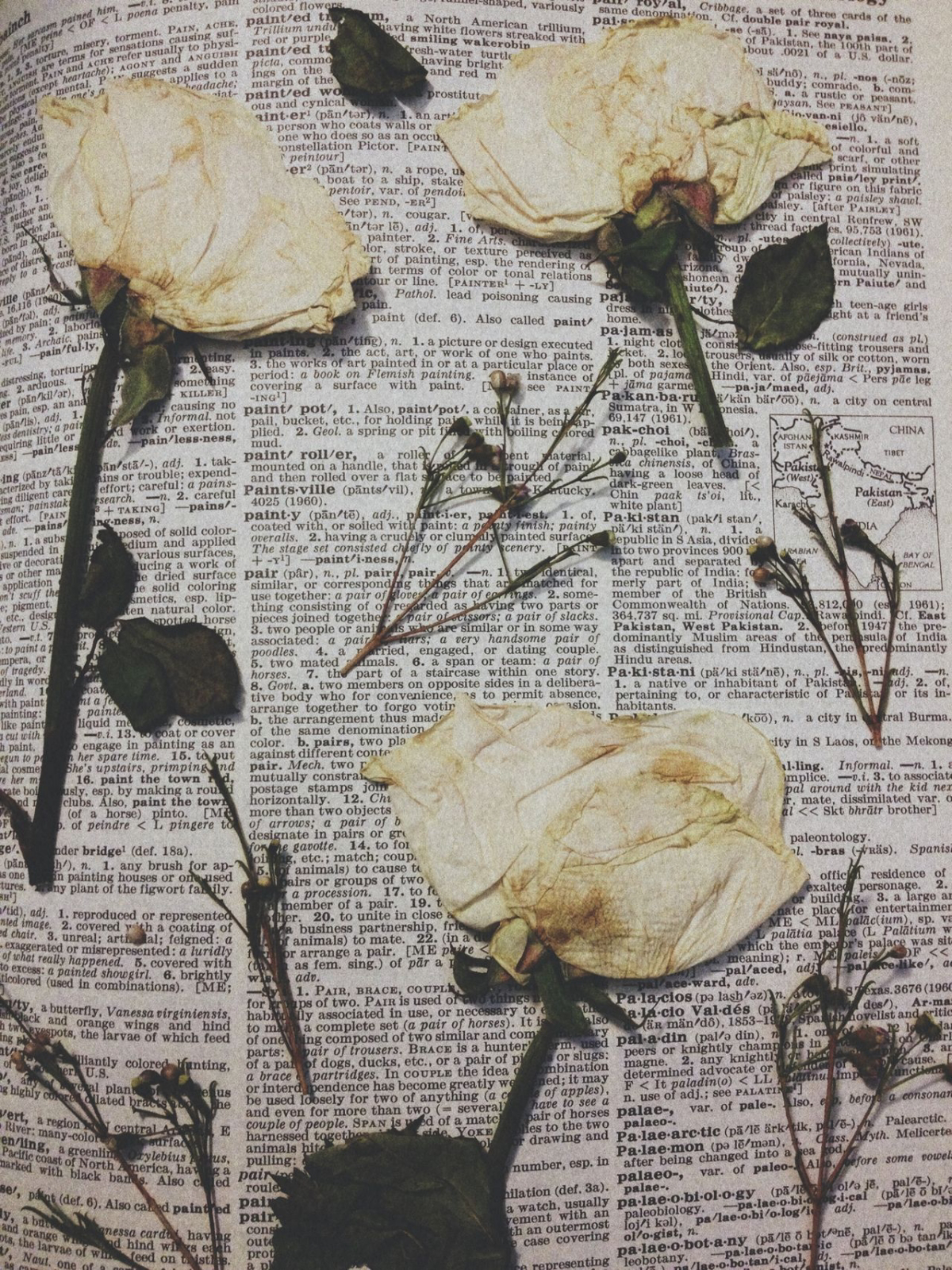
Creative Ideas for Using Pressed Roses
Pressed roses offer a world of creative possibilities. Here are some inspiring ideas to incorporate these delicate floral treasures into your crafting endeavors:
- Personalized Greeting Cards: Design exquisite greeting cards or stationery by adding pressed roses as accents. Whether it’s a birthday, anniversary, or a heartfelt note, these cards will carry your personal touch and a touch of natural beauty.
- Elegant Wall Art: Craft one-of-a-kind wall art by framing your favorite pressed roses. Arrange them in aesthetically pleasing compositions and display them in your home. The result is a stunning and timeless piece of art.
- Decorative Glassware and Candles: Elevate the elegance of your home decor by adorning glassware or homemade candles with pressed roses. The transparent nature of glass allows you to create enchanting displays where the delicate blooms shine through.
- Scrapbooking and Journaling: Infuse your scrapbooking and journaling projects with a whimsical touch by incorporating pressed roses. They can beautifully complement your stories and memories, adding a touch of nature to your creations.
- Handcrafted Jewelry: Design exquisite jewelry pieces that encapsulate the timeless beauty of pressed roses. You can embed them in resin pendants, earrings, or even as charms on bracelets. These jewelry items make for unique and cherished gifts.
Whether you choose to use pressed roses in your creative projects or simply display them as a charming keepsake, their delicate beauty, and timeless appeal will continue to captivate and inspire. Enjoy your journey of preserving and crafting with these natural treasures!
Craft one-of-a-kind wall art by framing your favorite pressed roses

Conclusion
The art of pressing roses is a celebration of nature’s beauty and the enduring charm of florals. With a little patience and a touch of creativity, you can turn ordinary roses into everlasting masterpieces that infuse beauty into every aspect of your life. Whether you choose to preserve romantic memories or create stunning decor, pressed roses offer a timeless elegance that captures hearts and inspires creativity. So, let your creativity bloom and embark on this delightful journey of preserving beauty with the enchanting world of pressed roses.
Now you know how to press roses and preserve their beauty forever!

